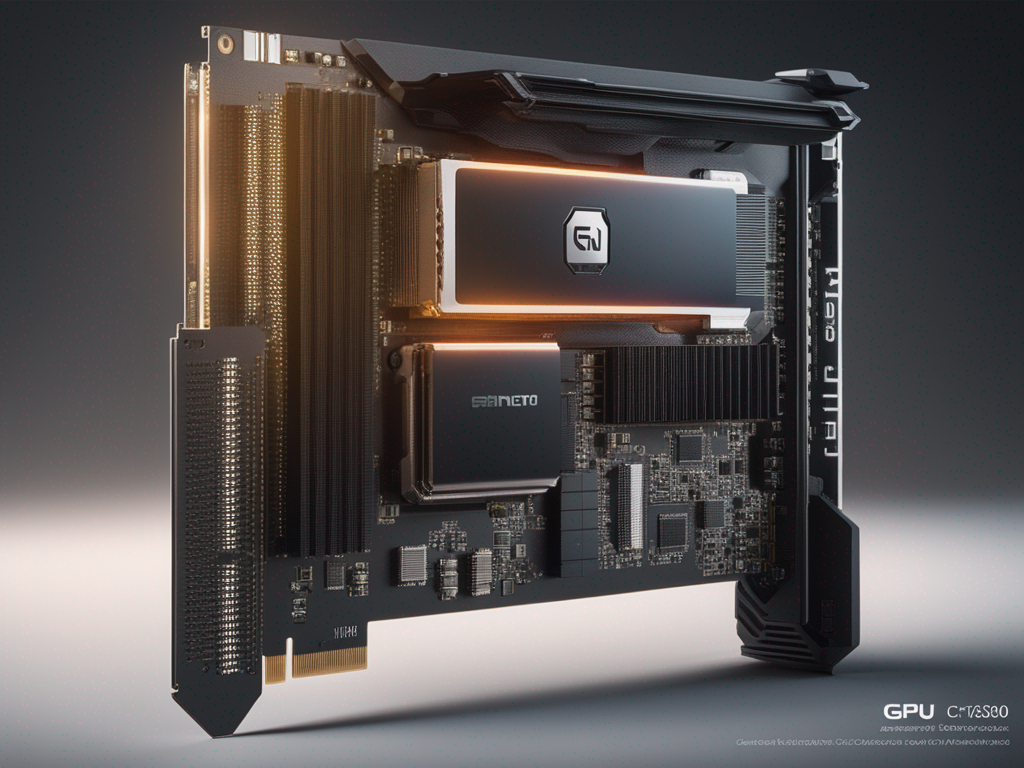Welcome to today’s deep dive into the fascinating world of cutting-edge research. We’re unpacking the mysteries of ferromagnetic levitation and the controversy surrounding superconductivity in synthetic materials. On the tech front, we’re exploring how large language models are revolutionizing penetration testing, and how a new compilation scheme is changing the game for CPU codes on GPUs. And for a twist, we’re delving into the contested field of ergodicity economics. From the labs of Peking University to heated debates on Hacker News, we’re your guide to the latest in scientific exploration and innovation. Stay tuned for an enlightening journey into the future of research!
Top Papers
1) Ferromagnetic Half Levitation of LK-99-like Synthetic Samples
Summary:
Researchers at Peking University synthesized ceramic samples containing copper and lead compounds, which displayed red transparent crystals identified as Cu2S, and magnetization measurements confirmed their presence.
View PDF | Chat with this paper
Copy slides outline
Copy embed code
Download as Word
Ferromagnetic Half Levitation: A Breakthrough in Synthetic Samples
Source: arxiv.org - PDF - 4,664 words - view
Synthesizing LK-99-like Ceramic Samples
• Researchers at Peking University successfully synthesized polycrystalline LK-99-like ceramic samples.
• Solid-state-sintering method used for synthesis.
• Main components of the samples: Pb10-xCux(PO4)6O and Cu.
Red Transparent Crystals - Cu2S
• The synthesized samples displayed a layer of red transparent crystals on the surface.
• These crystals were identified as Cu2S.
• Attempts to remove the crystals were partially successful.
Magnetization Measurements
• Magnetization measurements conducted on synthetic samples in a half-levitated state.
• Sample S1 analyzed at different temperatures and magnetic fields.
• Subtracted diamagnetic background indicates non-superconductivity.
Diamagnetic and Ferromagnetic Phases
• Synthetic samples contain both diamagnetic and ferromagnetic phases.
• Majority phase exhibits semiconducting resistivity.
• No trace of superconductivity found in the samples.
Study Conducted on Lu
• Zhu, Q. Li, C. He, Y. Liu, T. Huang, G. Liu, B. Zheng, H. Yang, J. Sun, X. Xi, and H.-H. Wen conducted a study on Lu.
• The study contributes to the understanding of ferromagnetic half levitation in synthetic samples.
Advancements in Synthetic Samples
• Successful synthesis of LK-99-like ceramic samples using solid-state-sintering method.
• Identification of red transparent crystals - Cu2S.
• Coexistence of diamagnetic and ferromagnetic phases in the samples.
• Semiconducting resistivity observed in the majority phase.
• Reminder: This breakthrough study sheds light on the magnetization properties of synthetic samples.
Note: Visuals such as crystal structures, magnetization curves, or experimental setup diagrams could be included to enhance the presentation.
Hacker News:
Researchers have discovered a synthetic material, LK-99, that possesses both ferromagnetic and strong diamagnetic characteristics, although doubts have been raised about the experiment’s reliability. View on HN
- LK-99 is a synthetic material that exhibits both ferromagnetism and strong diamagnetism, making it magnetically unusual.
- There are doubts surrounding the credibility of the LK-99 experiment due to false claims made by the researchers’ associated corporation.
- Skepticism and caution surround the potential discovery of superconductivity in LK-99-like synthetic samples, with some users emphasizing the need for concrete evidence before accepting the claims.
- Replication of superconductivity synthesis is challenging, and attempts that don’t show superconductivity are often dismissed.
- The discussion on Hacker News also includes topics such as the polarization of opinions, short attention spans, and low empathy.

2) Absence of Superconductivity in LK-99
Summary:
The study investigates LK-99, a material that supposedly demonstrates superconductivity at room temperature, through a synthesis process involving reaction and annealing to create precursor materials.
View PDF | Chat with this paper
Copy slides outline
Copy embed code
Download as Word
Absence of Superconductivity in LK-99 at Ambient Conditions
Source: arxiv.org - PDF - 3,446 words - view
Introduction
• The scientific community has been intrigued by the reported superconductivity in LK-99 at high temperatures.
• Several attempts have been made to reproduce the superconductivity, but only partial successes have been achieved.
• This study aims to synthesize phase pure LK-99 and investigate its superconducting properties.
Synthesis Process
• The synthesis process involved reaction and annealing to create precursor materials.
• Phase purity of each precursor was confirmed by Powder X-ray diffraction (PXRD) and Rietveld refinement.
• Synthesis of phase pure polycrystalline LK-99 with Lead Apatite structure was achieved.
Lack of Superconductivity
• The freshly synthesized LK-99 sample did not exhibit any signature of superconductivity at room temperature.
• Magnetization measurements confirmed that LK-99 is diamagnetic at 280K.
• The sample also showed high resistivity.
First Principle Calculations
• First principle calculations were performed to investigate the electronic band structure of LK-99.
• The calculations supported the generation of strong correlation in the system due to Cu doping.
• Cu doped Lead Apatite (LK-99) showed bands crossing at Fermi level, indicating the possibility of strong electron correlation.
Experimental vs. Computational Results
• Experimental results did not support the claims of superconductivity in LK-99 made by previous studies.
• Computational calculations, however, supported the proposed mechanisms for superconductivity.
• There is a discrepancy between experimental and computational results regarding superconductivity in LK-99.
Conclusion
• Despite efforts to synthesize phase pure LK-99, the experimental results did not support the presence of superconductivity.
• Further characterization and investigation are needed to understand the potential for superconductivity in LK-99.
• The claims of superconductivity in LK-99 require further scrutiny and replication.
[Optional: Include relevant visuals such as PXRD patterns, magnetization measurements, or electronic band structures to enhance understanding.]
Note: This is a simplified representation of the content. The actual presentation should include additional slides and relevant visuals to support the main points.
Hacker News:
The absence of superconductivity in LK-99 is doubted due to the suggestion of ferromagnetism, sparking debates among users about the progress of scientific research and the need for more evidence, emphasizing skepticism and the significance of superconductivity. View on HN
- The paper discusses the absence of superconductivity in LK-99 at ambient conditions.
- Another paper suggests that LK-99 is not a superconductor based on its findings of substantial ferromagnetism and minimal diamagnetism.
- A study from Lanzhou University indicates that annealing in an oxygen atmosphere enhances the superconductivity aspects of LK-99.
- There is uncertainty and skepticism surrounding the synthesis and analysis of LK-99.
- The field of superconductors has a history of failures and breakthroughs.
- The video provides a primer on the history of superconductors and highlights the challenges in the research field.
- There is ongoing discussion and analysis of the LK-99 paper, with scientists adjusting their optimism or pessimism based on the available information.
- The scientific consensus on LK-99 and its superconductivity status is still inconclusive.

3) Penetration Testing with Large Language Models
Summary:
This paper explores the use of large language models in penetration testing for task planning and vulnerability hunting, utilizing a hierarchical model named “TTP”.
View PDF | Chat with this paper
Copy slides outline
Copy embed code
Download as Word
Penetration Testing with Large Language Models
Source: arxiv.org - PDF - 4,847 words - view
Introduction
• Large Language Models (LLMs) like GPT3.5 can augment human testers with AI sparring partners.
• LLMs can be used in penetration testing for high-level task planning and low-level vulnerability hunting.
• LLMs are neural networks trained on vast amounts of data.
Visual: Image of GPT3.5
The TTP Model
• The TTP model is a hierarchical approach used in penetration testing.
• Tactics, techniques, and procedures are included in the TTP model to achieve specific objectives.
• The TTP model helps in organizing and structuring penetration testing tasks.
Visual: Diagram of the TTP model
High-Level Task Planning
• LLMs can be used in high-level task planning for penetration testing.
• AgentGPT is tasked with becoming a domain expert to plan and strategize.
• LLMs assist in developing effective strategies and identifying potential vulnerabilities.
Visual: Graph showing the effectiveness of LLMs in high-level task planning
Low-Level Vulnerability Hunting
• LLMs are valuable in low-level vulnerability hunting during penetration testing.
• LLMs assist in executing attacks and identifying vulnerabilities.
• Prototype runs using LLMs may have inconsistent stability and reproducibility.
• Longer runs or aggregating multiple runs can yield more consistent results.
Visual: Comparison of vulnerability identification results between short runs and longer runs
Integration of High-Level and Low-Level Approaches
• Integrating both high-level and low-level approaches improves user experience.
• LLMs complement human testers by providing a uniform interaction experience.
• The interaction between LLMs and human testers is enhanced through integration.
Visual: Image of LLMs and human testers working together
Reducing Hallucinations and Identifying Overlooked Vulnerabilities
• LLMs in penetration testing help reduce model hallucinations.
• LLMs assist in identifying vulnerabilities that may have been overlooked by human testers.
• The use of LLMs enhances the accuracy and effectiveness of penetration testing.
Visual: Examples of vulnerabilities identified by LLMs
References and Sources
• The excerpt provides references and sources related to cybersecurity, language models, and prompt engineering.
• References cover topics such as the shortage of workers in the cybersecurity industry and the use of Cobalt Strike as a tool.
• Additional sources provide insights into prompt engineering and advancements in language models.
Visual: Collage of book covers representing the references
Key Takeaways
• LLMs like GPT3.5 are valuable in penetration testing for task planning and vulnerability hunting.
• The TTP model helps achieve specific objectives in penetration testing.
• Longer runs or aggregating multiple runs with LLMs can yield more consistent results.
• Integrating high-level and low-level approaches improves the user experience.
• LLMs reduce hallucinations and identify overlooked vulnerabilities.
• References and sources provide further information on cybersecurity and language models.

4) GPU First - Execution of Legacy CPU Codes on GPUs
Summary:
The “GPU First” compilation scheme enables running CPU codes on GPUs without changing source code, facilitating acceleration identification and quick code modification testing.
View PDF | Chat with this paper
Copy slides outline
Copy embed code
Download as Word
GPU First - Execution of Legacy CPU Codes on GPUs
Source: arxiv.org - PDF - 10,592 words - view
Introduction
• The “GPU First” compilation scheme allows for the execution of legacy CPU codes on GPUs without modifying the source code.
• Transparent porting of legacy CPU codes to GPUs is possible and GPU performance exploration is feasible for non-experts.
• The methodology focuses on the execution of legacy CPU codes on GPUs without modifying the source code.
Simplified Acceleration Identification
• The scheme simplifies the identification of code regions suitable for acceleration.
• Rapid testing of code modifications on actual GPUs is enabled.
• Automatic generation of RPC calls facilitates code execution path.
Replacing Variadic Library Calls
• The text discusses the replacement of variadic library calls with RPC calls on the device.
• RPC calls are invoked by a wrapper on the host and unpack the arguments passed from the device.
• Device code is divided into call sites.
Handling Different Types of Arguments
• Different types of arguments are handled when offloading computations to the GPU.
• The first type is a value that can be directly passed to the GPU.
• The second type requires additional steps for handling.
Multiple Teams and Custom Allocators
• The use of multiple teams in parallel kernels is mentioned.
• Configurable custom allocators are needed due to variations in GPU heap allocation support among vendors.
• Tracking memory allocations is necessary.
Technical Challenges
• The GPU First methodology faces technical challenges.
• Limitations exist in moving more than one level of memory when accessing objects through indirection.
• Annotated library headers could help overcome challenges.
Performance Benchmarks
• Benchmarks conducted using CUDA 11.8.0 and -O3 optimization flag.
• AMGmk and page-rank benchmarks show good performance for relax kernel measurements and propagation step measurements, respectively.
• SPEC OMP benchmarks showcase different results.
Related Research Papers and Benchmarks
• References to research papers and benchmarks related to legacy CPU codes execution on GPUs.
• Co-designing OpenMP GPU runtime and optimizations for near-zero overhead execution are discussed.
• Efficient GPU-centric communication on NVIDIA GPU clusters is explored.
Conclusion
• The “GPU First” compilation scheme simplifies the identification of code regions suitable for acceleration.
• Rapid testing of code modifications on actual GPUs is facilitated.
• GPUs perform well for certain benchmarks’ relax kernel measurements and propagation step measurements.
Key Takeaways
• The “GPU First” compilation scheme allows for the execution of legacy CPU codes on GPUs without modifying the source code.
• Transparent porting of legacy CPU codes to GPUs is possible and GPU performance exploration is feasible for non-experts.
• The methodology focuses on the execution of legacy CPU codes on GPUs without modifying the source code.
• Benchmarks show that GPUs perform well for relax kernel measurements and propagation step measurements in certain benchmarks.

5) Ergodicity Economics Pseudoscience or Future Economic Science
Summary:
Ole Peters proposes ergodicity economics as a new approach to economics, questioning expected utility theory and promoting optimal portfolio selection.
View PDF | Chat with this paper
Copy slides outline
Copy embed code
Download as Word
Ergodicity Economics: Pseudoscience or Future Economic Science
Source: arxiv.org - PDF - 3,281 words - view
Introduction
• Ole Peters proposes ‘ergodicity economics’ as a new approach to economics
• Ergodicity economics challenges mainstream economic theory
• The goal is to create a more parsimonious and conceptually clearer economic science
'Ergodicity Economics' Defined
• ‘Ergodicity economics’ is the study of financial decisions under uncertainty
• It focuses on growth rate optimization
• The approach questions the assumptions of expected utility theory
Testable Implications of 'Ergodicity Economics'
• The optimal portfolio problem is a testable implication of ‘ergodicity economics’
• Data can be collected to check if investors choose the portfolio prescribed by ‘growth rate optimization’
• Comparisons can be made with the predictions of expected utility theory
Lack of Testable Predictions
• ‘Ergodicity economics’ has not provided many testable implications
• The lack of progress in the field raises skepticism about its validity
• The approach has not added anything new beyond existing economic theories
Indicators of Pseudoscience
• ‘Ergodicity economics’ exhibits indicators of pseudoscience
• Vague and exaggerated claims are made without concrete applications or testable implications
• The evidence collection is improper and lacks openness to testing by other experts
Concerns about Researchers Attacking Economics
• Some researchers lack proper training in economics and attack the field based on ignorance and misunderstanding
• The use of popular and social media to disseminate pseudoscientific information is concerning
• Scientific journals should maintain the integrity of peer review
Concluding Remarks
• ‘Ergodicity economics’ is questioned as pseudoscience due to the lack of testable implications and progress
• Researchers should follow scientific methods and avoid attacking fields based on ignorance
• Open-mindedness and collaboration between physicists and economists are encouraged for studying economic phenomena





